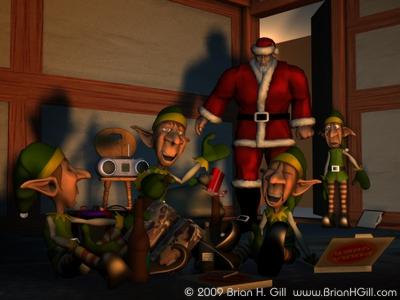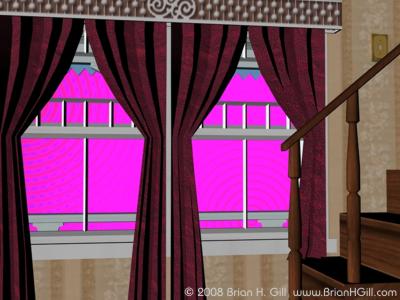Pip
'Twas the night before Christmas, and all through the shopNothing was stirring, you could hear a pin drop.
The sleigh was not ready, the toys were not packed,
Santa was fuming and quite lacking in tact.
"Pip!" he called out to the foreman on duty,
Where is your crew? And don't act so snooty!
Pip's feelings were hurt, but he wondered the same
Were they lost? Had they left? Were they playing a game?
"Never mind!" thundered Santa, while grabbing his sack,
"We'll do it ourselves: There are toys in the back."
So into the warehouse like madmen they flew.
Santa and Pip had much packing to do.
And then, down a corridor seldom in use,
They heard something like an hysterical goose.
But no, there were words in that hideous shriek,
It was music: now Santa was prone to critique.
Santa strode to the source of that hideous din,
Closely followed by Pip, who beheld with chagrin:
Three elves and four bottles and, there on a chair,
A boom box whose music was filling the air.
Santa stood for a moment, transfixed by the sight
Then he bellowed so loudly that Pip shook with fright.
"You! Chuckles! And Bubbles! And you, mister Suds!"
Why are you carousing while in your work duds?"
The fate of that threesome Pip would not relate,
Except to recall that the hour was late:
And Santa was anxious to fly in his sleigh,
And dealt with loose ends on the following day.









